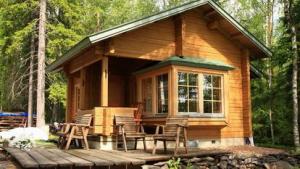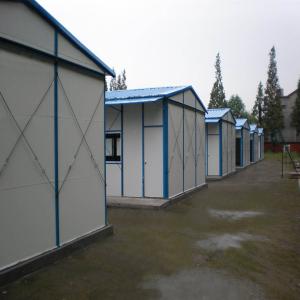Wooden house, log houses
- Loading Port:
- China Main Port
- Payment Terms:
- TT OR LC
- Min Order Qty:
- -
- Supply Capability:
- -
OKorder Service Pledge
Quality Product, Order Online Tracking, Timely Delivery
OKorder Financial Service
Credit Rating, Credit Services, Credit Purchasing
You Might Also Like
wooden villa house; Wooden house, log houses
Simple and founctional family living house
Specifications
Wooden house, garden hose, children's play house
- Q:How about the comparison of container houses?
- Commercial housing: Shenzhen, Shanghai, the average price of about 45,000 yuan per square meter
- Q:Can container houses be built with sustainable materials?
- Certainly, sustainable materials can indeed be used to construct container houses. The utilization of shipping containers as the foundation for homes is already an environmentally conscious approach, as it repurposes these steel structures that would otherwise be wasted. Furthermore, sustainable materials can be integrated into the construction of container houses to further enhance their eco-friendliness. For instance, container walls, floors, and ceilings can be insulated using sustainable insulation materials like recycled denim, cellulose, or wool. This insulation reduces the energy required for heating and cooling. Additionally, renewable and low-impact flooring options such as bamboo or cork can be employed. Windows and doors made from recycled materials, which are energy-efficient, can be installed. Moreover, the use of low-VOC paints and finishes can improve indoor air quality. Furthermore, container houses can become more self-sufficient and reduce reliance on fossil fuels by incorporating renewable energy systems like solar panels. Rainwater harvesting systems can also be implemented to collect and reuse water, thereby reducing water consumption and lessening the strain on local water sources. Through the adoption of these sustainable materials and practices, container houses can significantly decrease their environmental impact and contribute to a more sustainable and eco-friendly housing solution.
- Q:How are container houses different from traditional houses?
- Container houses, also known as shipping container homes, are unique and distinct from traditional houses in several ways. Firstly, the construction process differs significantly. While traditional houses are built using conventional materials such as bricks, wood, and concrete, container houses are constructed from repurposed shipping containers. These containers are made of steel, making them sturdy and durable. Secondly, container houses are more cost-effective compared to traditional houses. The use of shipping containers significantly reduces the construction costs as containers are readily available and relatively inexpensive. Moreover, the construction time is reduced as container houses can be prefabricated and assembled on-site, resulting in lower labor costs. Another notable difference is the flexibility and versatility of container houses. Traditional houses are generally fixed structures, whereas container houses can be easily modified, expanded, or relocated. The modular design of shipping containers allows for more flexibility in the layout and design of the living space. This adaptability makes container houses a popular choice for those seeking a more customizable and unique living environment. Furthermore, container houses are considered more environmentally friendly compared to traditional houses. By repurposing shipping containers, these homes contribute to recycling and reducing waste. Additionally, container houses often incorporate sustainable features such as solar panels, rainwater harvesting systems, and energy-efficient insulation, making them more eco-friendly and energy-efficient. In terms of aesthetics, container houses can have a modern and industrial look due to their steel structure. However, with creative designs and exterior finishes, they can also resemble traditional homes. This versatility in appearance allows homeowners to choose a style that suits their preferences. In summary, container houses differ from traditional houses in terms of construction materials, cost-effectiveness, flexibility, environmental impact, and aesthetic options. These unique characteristics make container houses an attractive and innovative alternative for those seeking a more affordable, sustainable, and customizable housing solution.
- Q:Can container houses be insulated?
- Certainly! Container houses can indeed be insulated. Insulation plays a vital role in the construction of container houses. Due to their metallic composition, shipping containers have a tendency to transfer heat and cold, resulting in an uncomfortable interior temperature. Nevertheless, incorporating insulation into the walls, roof, and floor of a container house can significantly enhance its thermal performance. Multiple insulation options are at one's disposal, ranging from foam and fiberglass to natural materials like straw bales. Moreover, insulation aids in reducing energy consumption for heating or cooling, thus rendering container houses more energy-efficient and economically advantageous in the long term.
- Q:Can container houses be insulated for temperature control?
- Yes, container houses can be insulated for temperature control. Insulation is an essential component in container house design to regulate the internal temperature and create a comfortable living environment. There are various insulation options available for container houses, including spray foam insulation, fiberglass insulation, and rigid foam insulation. These materials can be applied to the walls, floors, and ceilings of the container to provide a barrier against external temperature fluctuations. Additionally, insulation can also help in reducing energy consumption by minimizing heat transfer, resulting in lower heating and cooling costs. With proper insulation, container houses can be made thermally efficient and comfortable in any climate.
- Q:Can container houses be designed to have a pet-friendly space?
- Yes, container houses can be designed to have a pet-friendly space. With proper planning and design, features such as designated areas for pet beds, litter boxes, and pet-friendly flooring options can be incorporated into the layout. Additionally, considering easy access to outdoor spaces, such as a fenced yard or a balcony, can provide pets with the necessary exercise and fresh air.
- Q:Are container houses environmentally friendly?
- Container houses can be considered environmentally friendly for several reasons. Firstly, they are constructed using repurposed shipping containers, which reduces the demand for new materials and helps to combat the problem of waste accumulation. By recycling these containers, we are able to give them a new purpose and extend their lifespan. Secondly, container houses are often designed to be energy-efficient. They can be equipped with insulation materials that help to regulate indoor temperatures, reducing the need for excessive heating or cooling. Additionally, container homes can be fitted with energy-saving appliances and solar panels, further reducing their carbon footprint. Furthermore, container houses can be designed to be self-sufficient in terms of water and energy consumption. For instance, rainwater harvesting systems can be installed to collect and reuse water for various purposes, such as irrigation or flushing toilets. This reduces the strain on local water resources. Similarly, solar panels or other renewable energy sources can provide electricity, reducing reliance on fossil fuels and reducing greenhouse gas emissions. Lastly, container houses can also contribute to the reduction of urban sprawl. By repurposing existing structures, container homes can be built in urban areas, making use of vacant lots or underutilized spaces. This can help to revitalize communities and reduce the need for new developments on previously undeveloped land, which can contribute to habitat destruction and environmental degradation. Overall, while there are certainly environmental benefits to container houses, it is important to note that their overall sustainability depends on various factors, such as the construction materials used, the energy efficiency of the design, and the location of the house. However, when designed and built with sustainability in mind, container houses can be an environmentally friendly alternative to traditional housing.
- Q:Are container houses suitable for areas with high winds?
- Areas with high winds can be suitable for container houses, given proper design and construction to withstand these conditions. The modifications made to the original container and the foundation it rests upon greatly influence the structural integrity of the house. To enhance wind resistance, one can reinforce the structure by adding braces or welding extra steel beams to the container walls or roof. Additionally, securing the container to its foundation with hurricane straps or anchor bolts can prevent it from being lifted or blown away during strong winds. Considering the location and orientation of the container house is essential. Placing it in a wind-protected area, such as behind natural windbreaks like hills or trees, can mitigate the impact of high winds. Properly positioning the entrance and windows can also reduce the risk of wind damage. The choice of materials for insulation and cladding is another factor influencing wind resistance. Opting for resilient materials like reinforced concrete panels or fiber cement siding can provide an extra layer of protection against high winds. Ultimately, container houses can be suitable for high-wind areas, but it is vital to collaborate with experienced professionals who understand the unique challenges posed by the local climate. By carefully considering design, construction, and location factors, container houses can offer a secure and comfortable living space even in regions prone to strong winds.
- Q:Can container houses be designed with a modular layout?
- Yes, container houses can definitely be designed with a modular layout. In fact, modular construction is one of the key advantages of container houses. The modular design allows for easy customization and flexibility in terms of layout and floor plan. Each shipping container can be considered as a module that can be stacked or rearranged according to the desired design. This means that container houses can be expanded or reduced in size by simply adding or removing containers. Additionally, the modular layout of container houses allows for easy transportation and installation on-site. Overall, the modular design offers endless possibilities in terms of creating unique and functional living spaces with container houses.
- Q:Are container houses suitable for co-housing communities?
- Yes, container houses can be suitable for co-housing communities. Container houses offer several advantages such as cost-effectiveness, sustainability, and flexibility in design. They can be easily modified and expanded to accommodate multiple households within a co-housing community. The compact nature of container houses also promotes a sense of community and fosters social interaction among residents. Additionally, their portability allows for easy relocation if desired. However, it is important to consider the local regulations and infrastructure requirements when planning container houses for a co-housing community.
1. Manufacturer Overview |
|
|---|---|
| Location | |
| Year Established | |
| Annual Output Value | |
| Main Markets | |
| Company Certifications | |
2. Manufacturer Certificates |
|
|---|---|
| a) Certification Name | |
| Range | |
| Reference | |
| Validity Period | |
3. Manufacturer Capability |
|
|---|---|
| a)Trade Capacity | |
| Nearest Port | |
| Export Percentage | |
| No.of Employees in Trade Department | |
| Language Spoken: | |
| b)Factory Information | |
| Factory Size: | |
| No. of Production Lines | |
| Contract Manufacturing | |
| Product Price Range | |
Send your message to us
Wooden house, log houses
- Loading Port:
- China Main Port
- Payment Terms:
- TT OR LC
- Min Order Qty:
- -
- Supply Capability:
- -
OKorder Service Pledge
Quality Product, Order Online Tracking, Timely Delivery
OKorder Financial Service
Credit Rating, Credit Services, Credit Purchasing
Similar products
New products
Hot products
Related keywords





























